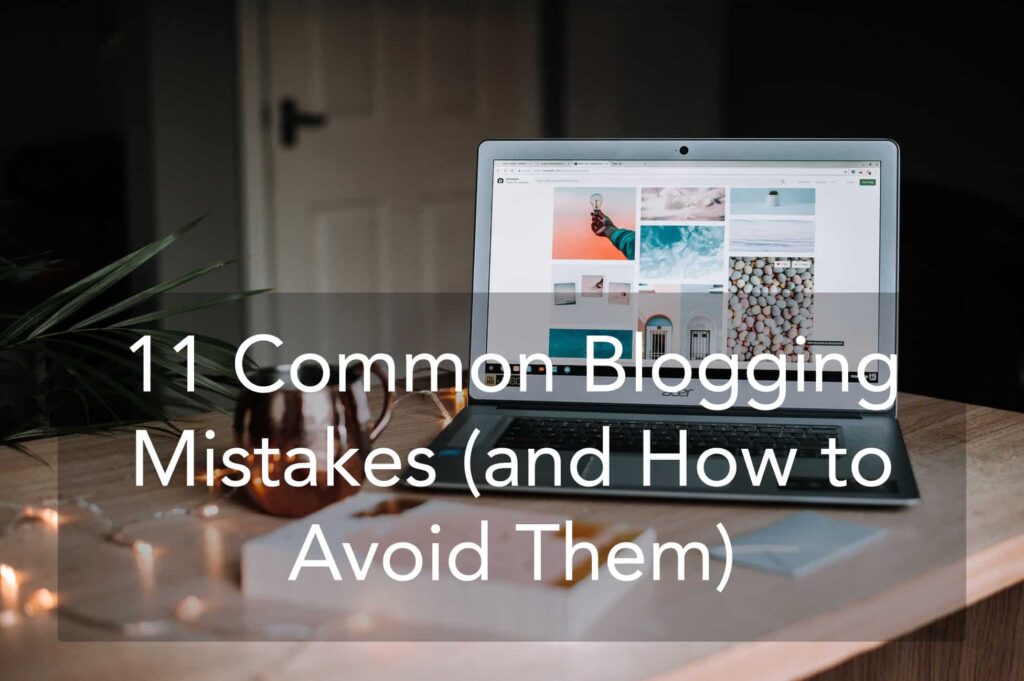
Everyone can blog, but not everyone can blog well. Even if you get most things right, there are some common mistakes that seem to plague beginners predictably.
Fortunately, this blogging thing isn’t new, and you can learn lessons from those who have been around the block. This post will look at 11 common blogging mistakes beginners make, and how you can avoid them.
Effortlessly export your Google Docs to WordPress with just 1-click.
Get Started TodayWhat is the point of your blog? If you can’t answer this question, you need to rethink your blog strategy.
A blog without a goal is not only aimless, but a fruitless exercise.
You have to think about your readers. What will they see when they visit your blog? A person who writes about a niche topic that interests them? Or someone who writes about everything under the sun?
While it can be tempting to go wide with your interests and goals, you will end up spreading yourself too thin to make any reasonable impact with your blog.
Choose one primary goal and tailor your content accordingly. This may seem limiting—especially if you have multiple areas of expertise—but if it isn’t going to get you results, don’t include it in your blog.

Source: Venngage
Now that you have a goal, you need to understand what you can give to your target audience, and how. Understanding your audience is crucial to making your blog a success.
While you may have chosen your niche, you have to realize that audiences generally go to the internet to have very specific search queries answered. That is how they find you.
You have to give your audience what they want—specific, targeted content that will provide solutions to the problems they have.
The more targeted content you create, the larger your following will become, until you have built yourself a brand name.
This point is tricky. For one, you do not want to get too personal with your blog—for security issues, but also because it can come off as alienating for some readers.
On the other hand, however, being completely generic isn’t going to give your readers incentive to engage with your blog. They could read anybody’s blog—what are you bringing to the table?
Bringing your own voice into your writing is a challenge—I faced this myself when I began writing. I left myself out, and wrote about an omnipresent ‘we’ that resonated with no one.
While you are writing your blogs, add a snippet or two about your personal experience with the subject—this adds flavor and realism to your blog, and makes your writing authentic.
But avoid veering to the other end of the spectrum and writing only about yourself—there is such a thing as too much authenticity.
Sujan Patel, Right Inbox co-founder is a firm believer in narrowing your niche. “Managing a blog with a very specific focus makes it easier to become an authoritative voice in that niche and, in turn, to gain followers.”
It should go without saying that writing a blog—or anything, for that matter—requires a lot of research. You will often find yourself spending more time researching than writing!
But research is an extremely important aspect of the blogging world.
There are several layers of research that you should do. For one, finding out what topics your audience is interested in so you can write the content they need.
Learn about what others, including competitors, in your niche are writing about, and where they are seeing success. This will help you develop a strategy that will set you apart.
By doing research well in advance, you can avoid writing about topics that have already been covered a dozen times.
You can also often find a completely new topic that is more relevant to your niche during the research process—this has happened to me countless times.
Definitely, take the time to research because it will make your blog much more successful.
But there is one thing you should aim to avoid—just because you have done a great deal of research, it doesn’t mean that all your findings need to be included in your blog.
Only add the most salient points to ensure you keep your readers interested.

Source: Buzzsumo
How often do you read articles online? What is the one thing that grabs your attention enough to make you read more? That’s right, it’s the headline.
The attention spans of people online has been steadily decreasing over the past few years—and will continue to do so.
For bloggers, this has led to a massive challenge—optimizing the blog headline despite the limited real estate available to convey the crux of your message.
Headlines have to be written with specificity in mind—this will help readers know how long an article might be and why it is relevant to them.
Think about adding numbers in your headline—’9 Easy Changes to Make Your Day More Productive’, instead of ‘How to be More Productive’.
Make your headline goal-oriented and actionable—instead of ’5 New Hair Products Available’, write ‘5 New Products that Will Give You Glossy Hair’.
Try and include some sense of urgency in your headlines. Words like ‘now’ and ‘limited’ are great for blog headlines, as well as for news pieces, and even for emails.
It’s also a good idea to change your headline after you’re written the blog—a working title is a good start, but you may be able to add more punch once the piece is completed.
Every writer knows the importance of revision. But with deadlines looming and increased workloads, it can seem prudent to save time and upload your draft as is.
I cannot stress this enough—do not do this!
Even the most capable writer needs to revise. Our brains move faster than our hands, which results in typos—missing out simple words because you have moved ahead in your mind.
Simple grammatical errors creep in all the time—when you’re writing, you are so absorbed in the process that the right word eludes you.
If you don’t revise, you will miss the chance to correct those mistakes.
Revision also helps to clear up some of your writing—you will find better ways to phrase something, or that you can tighten a paragraph a little.
While some bloggers edit as they write, this is not the best use of your time. Without the complete piece in front of you, you may end up editing out important parts of your blog.
Instead, once you have written your blog, spend at least 30-45 minutes revising it. You will always find things to correct, even if you have been careful.
Writing with SEO in mind is a completely different ballgame to writing a regular blog. It’s more technical, and requires you to follow steps.
But SEO is extremely important for bloggers—hence my use of the exclamation point.
SEO is what will help people find your blog posts, and will also get your content ranking on Google. It’s what you need to grow your following and spread brand awareness.
When writing your blog according to SEO guidelines, you will need to choose a focus keyword or key phrase, which you should be using in your headline, subheadings, and in the body copy.
SEO isn’t something you can learn overnight but you can look at these blog SEO strategies for guidelines.

Source: Venngage
You can write the best blog posts but your writing may not be enough to keep people engaged with your content.
Remember that there are thousands of other blogs in your niche that are competing for attention—you have to do something a little different to stand out from the crowd.
This is where visuals come in—a great blog header will capture readers’ attention and give your blog some life.
But you can also include visuals within the body of the blog post—a process infographic, charts, graphs, and images would all be good additions that help the flow of your post.
The best images accentuate and build on the written content, rather than just serving as a nice way to break up text, according to Mark Lindquist, marketing strategist at Mailshake. “Take this article on LinkedIn prospecting we recently published. We have a few custom-designed images to make it more visually appealing, but a lot of the images actively move the article forward.”
Says Mark. “We’ve got screenshots, a visualization of a process, and an infographic breaking down a specific strategy. Content with good custom images are easier to read for your visitors, and easier to promote for your content team. A win-win.”
However, it is best to avoid using stock photos because they have been overused so much over the last few years.
If you can’t take relevant photos yourself, use an online resource to create attractive visuals.
Design isn’t something that bloggers often think about—the writing is the focus.
But good blog design can make a difference to the user experience. Bad design can impact readability, which will lead to people leaving the blog instead of reading it.
Take a look at your blog design before you make it public. Is the size of the text large enough to be readable? Is there enough space around the text, and between the words?
Look at the fonts of your blog. Are they serif, sans serif, or handwritten? What colors are you using? Do they complement each other?
Beyond the design of the blog platform, you also need to ensure that the way you structure your blog makes it easy for people to read.
This means keeping the paragraphs small—2-3 lines at the most—and broken up into distinct sections with headers and subheadings.
And you should follow these guidelines when guest posting, as well.
Making your blog design more readable will improve the user experience and help you grow your following.

Source: Social Media Examiner
I’m sorry to say that your work does not end once you’ve written your blog. How will people find your blog? Simply writing great content isn’t enough to get people’s attention.
While SEO will help you rank on Google, if your post receives no views, Google will deem your content irrelevant to the audience.
Be creative in your digital marketing—this means posting on social media, and including keywords in the post, along with visuals to make it more appealing.
Send the blog post as an update to your email list, as well.
The marketing plan for your blog needs to be omni-channel if you want to get the most eyeballs on your posts.
How do you know whether your blogging efforts are paying off? You need to conduct in depth analysis of your posts.
You will want to look at how many views your posts received, as well as how many comments.
Conduct marketing analysis to understand which channels are bringing in readers—social media, emails, or SEO? How many new readers versus returning ones?
You will also want to know which posts are doing better and why, as compared to others.
Analysis is not an easy task but it can make a major difference in how well your blog does and the areas that you need to focus your efforts on.
Blogging is an immersive and enjoyable experience but if it isn’t done right, your attempt at running a blog will fizzle out, as will your interest.
If you recognize yourself in the above 11 mistakes, don’t worry. These mistakes are made by all bloggers.
The key is to realize that you are making a blogging mistake, and that you are ready to rectify it.
Don’t expect to see immediate results with your blog, but keep working at it. By following the solutions we have presented, you will be able to create a successful and long-lasting blog.
About the Author

Ronita Mohan is a content marketer at Venngage, an infographic maker and design platform. She enjoys writing about content marketing, productivity, design, the digital world, as well as pop culture, and diversity.
Twitter: @Venngage